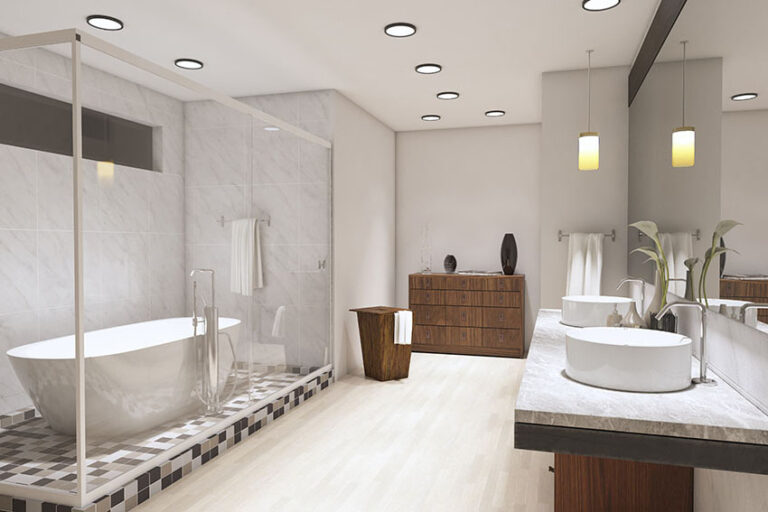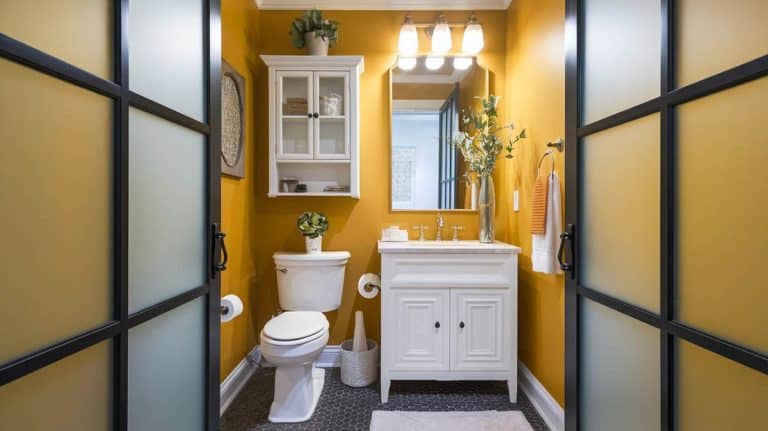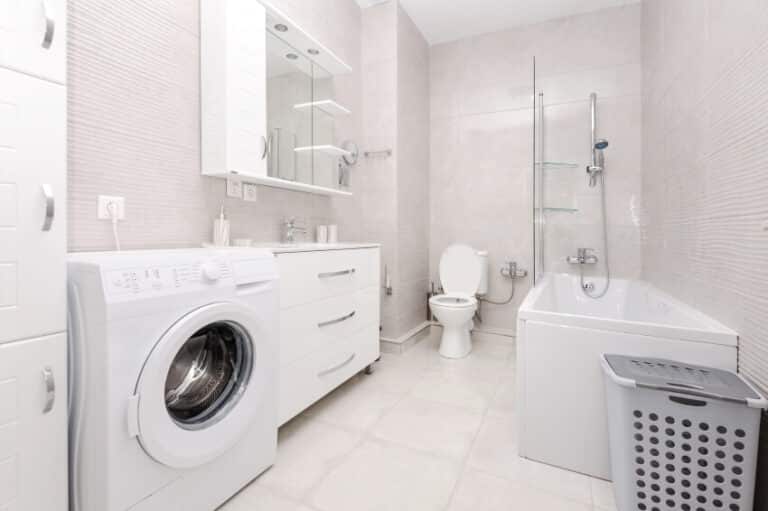Large Format Tiles in Small Bathrooms
Get ideas for large format tiles in small bathrooms including the characteristics of this tile type, advantages, challenges, and if it’s too big to use.
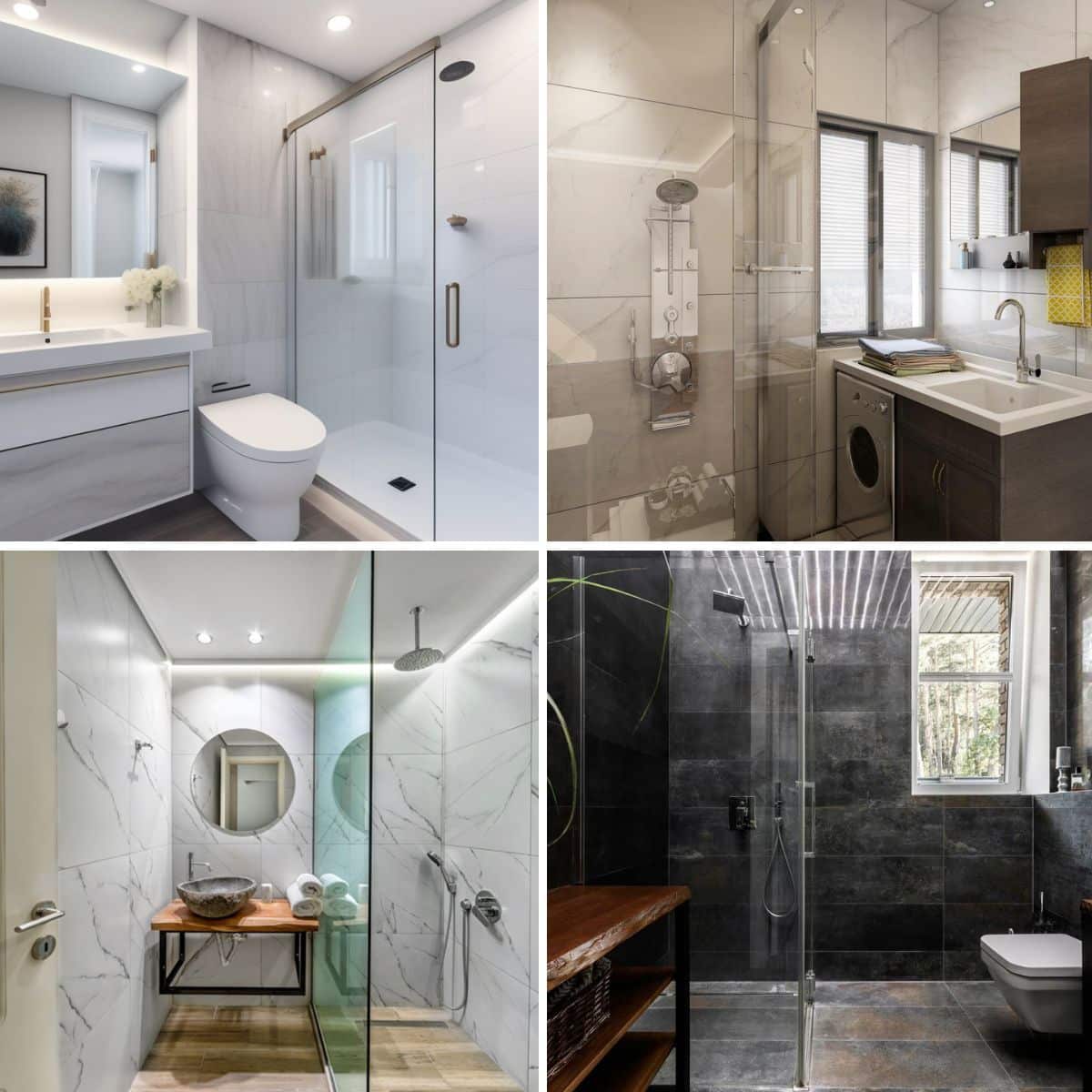
With limited space, a small bathroom needs a well-designed plan to maximize space and maintain the desired relaxing ambiance. Since the walls and flooring take up most of the visual space, choose a cladding material to make the room look wider. Large format tiles in small bathrooms are a great way to achieve a relaxing vibe with a perceived wider space.
A few decades ago, these oversized tiles were primarily used in commercial projects, creating the ultra-sleek high-end look in hotel lobbies and other commercial spaces.
The first versions of the large format tiles were made from thin porcelain panels or TPT with the use of a large plate presser called Laminam. Another method used is the Continua, a roller presser that can print, cut and design large format tiles.
Today, the improvements in tile and grouting materials as well as advanced construction methods, paved the way for the use of large-format tiles in residential settings.
Oversized Tiles
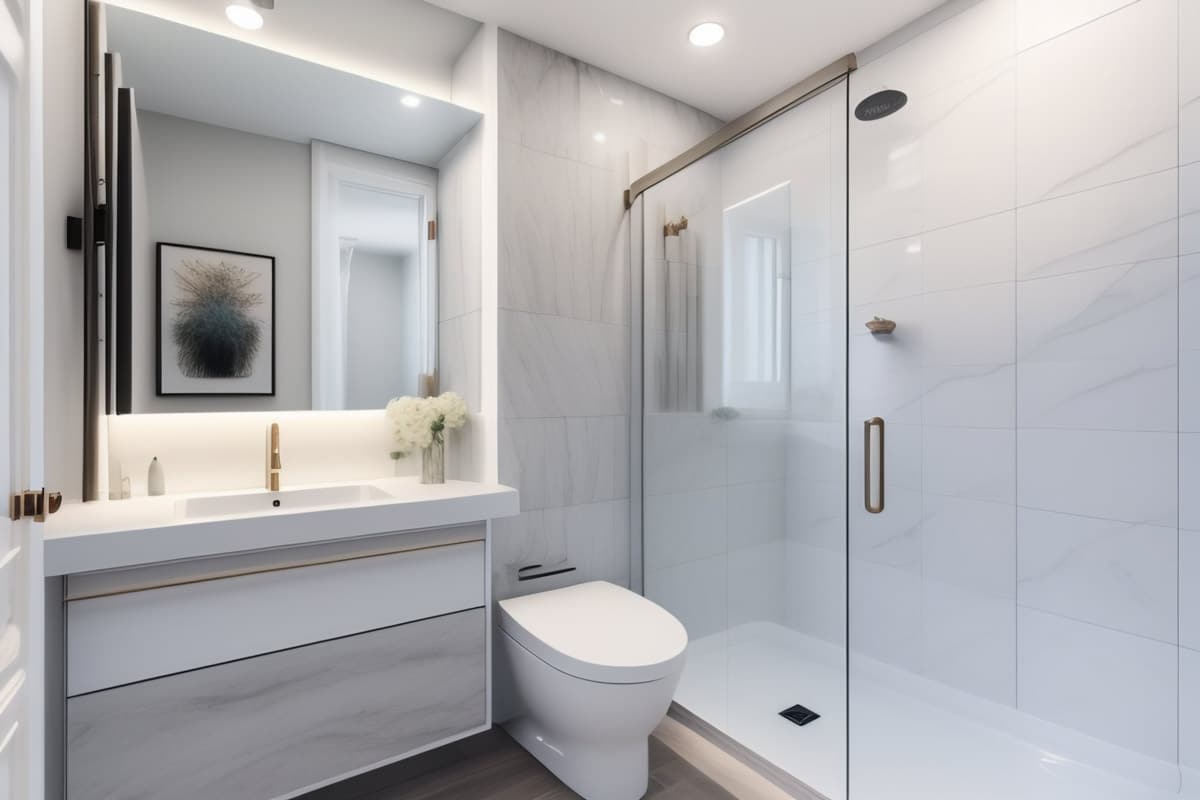
Tiles are considered large format tiles when one side is more than 15 inches, according to the TCNA Handbook for Interior and exterior guidelines.
Sizes: Oversized tiles come in myriad colors and styles; the most popular material used in large-format tiles is porcelain tiles. Unlike natural stone, porcelain tiles are lighter and can be made with a wide range of designs mimicking the look of natural stone.
Some of the most common rectangular large format tile sizes include 6×16, 6×24, 6×36, and 18×18. Larger format tiles are likely too wide for small bathrooms, which can be as large as 12×24, 24×24, and 24×48.
Materials: Regarding materials, large-format tiles have a wide range of options. Porcelain has paved the way for large tiles to be installed in residential projects due to being lightweight and affordable. Ceramic and concrete are two other popular materials for large-format tiles. Printed porcelain tiles make it possible to include the look of stone and other customized designs.
Grout: When it comes to grouting large tiles, various types of grouts are available, including cement-based grout, epoxy grout, and urethane grout. Cement-based grout is commonly used for large format tiles due to its versatility, affordability, and ease of installation.
But cement-based grouts will need sealing. For bathrooms and other wet areas, epoxy grout is recommended since it won’t stain and does not require sealants.
The color of the grout can significantly impact the overall appearance of the tiled surface. Light-colored grout tends to highlight the tiles and create a more seamless and uniform look, while darker grout can provide contrast and emphasize the individual tiles.
Consider the desired aesthetic and choose a grout color that complements the tiles and the overall design scheme.
Advantages of Using Larger Tiles
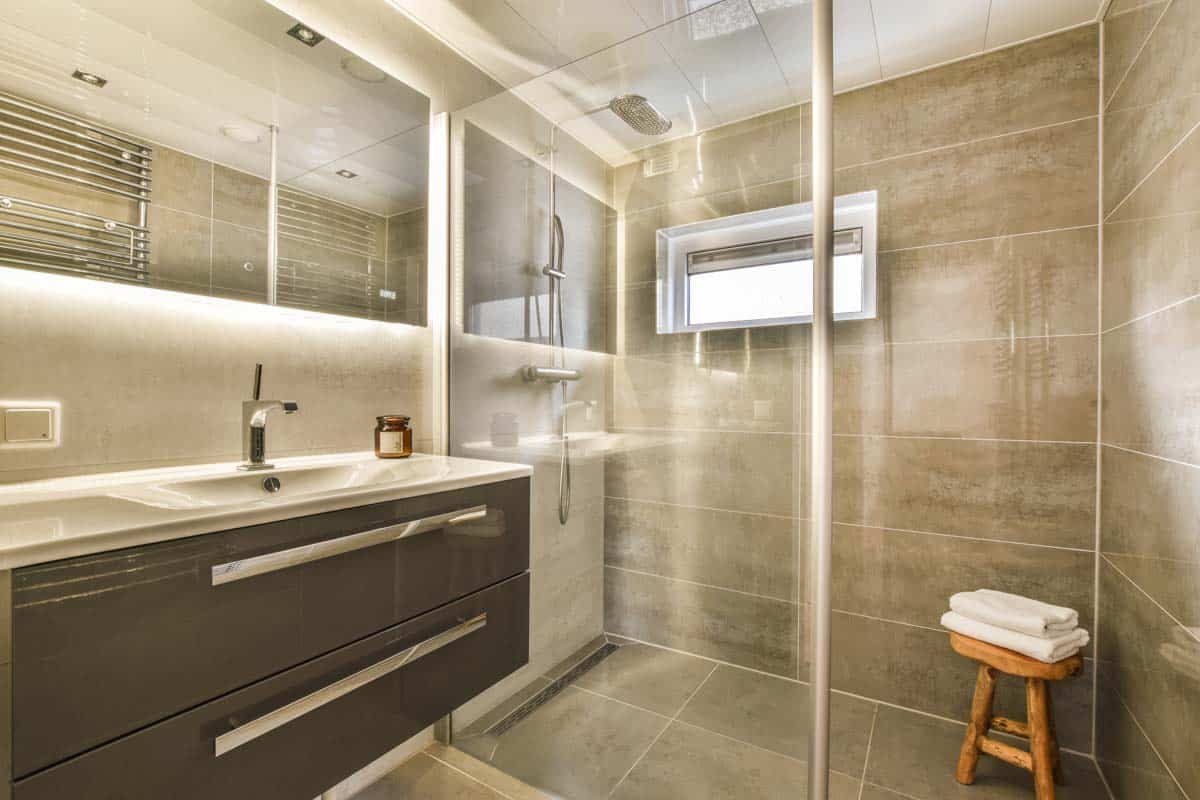
It can make a small bathroom look wider: Larger tiles can make small bathroom sizes seem wider due to fewer grout lines. The continuous tile is the perfect option when aiming for a minimalistic or modern look. Consider a minimum 3mm grout line with rectified tiles to have a more seamless effect on a large tile layout.
Large format tiles are becoming increasingly popular in both residential and commercial spaces. – Tiling, Mansoor Muallim
Plank-sized tiles can make a small bathroom look taller: Plank tiles installed vertically can visually elongate a low-ceiling bathroom. The plank sizes can come in standard sizes of 4×24, 6×24, 8×32, 12×24, and 12×48. However, note that vertical tiles can make a small bathroom look tighter.
Less grout means less cleaning: With fewer seams for dirt and debris to accumulate, the less likely mold and mildew would harbor on large tiling. This saves time in maintaining and eliminating the need to use harsh chemicals on the tile layout.
It can make a small bathroom look updated: The clean and uncluttered look is the hallmark of modern interiors today. Large format tiles can make the room look modern and timeless.
Higher resale value: The bathroom is commonly the first thing a buyer looks into when purchasing a property. A small bathroom can look luxurious and sophisticated even with the limited area prompting a higher resale value.
A 2022 research study by Today’s Homeowner found that an average bathroom remodel of $26,574 can yield approximately $15,944, upon the sale of the home, which is a 60% return on investment.
Enhance visual focus: Using large format tiles on a feature wall or as a backsplash can draw attention and create a focal point in the small bathroom. This can add interest and depth to the space, diverting attention from the limited square footage.
Reduce installation time: With a regular-shaped room and expert installation, installing larger size tiles in a small bathroom can be quicker than regular or small tiles.
Challenges When Installing Large Tiles
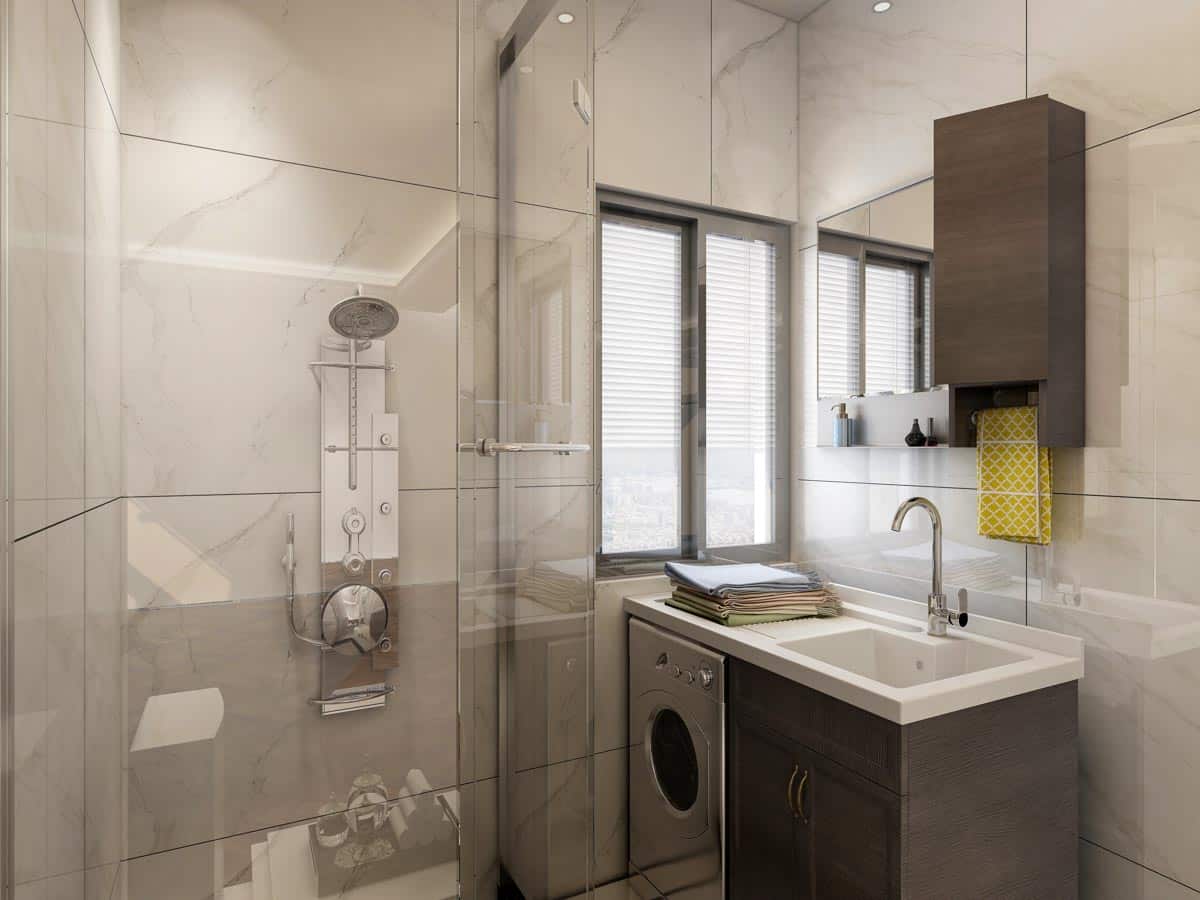
Substrate Preparation: While there are lighter tiles available, not all wall materials are structurally sound to hold large format tiles. Aside from the weight, the substrate should be leveled properly, which will require expert installers. Small bathrooms often need more space, making achieving a perfectly leveled surface more challenging.
Tile Handling and Placement: Large tiles are heavier than smaller tiles. It can be challenging to maneuver and position them accurately in tight spaces. Care must be taken to prevent any damage to the tiles during handling and installation. If the small bathroom is located on the second floor, additional manpower and handling is needed.
Cutting Tiles: Existing fixtures and fitting large format types of bathroom tiles against corners in a small area can be a challenge which may also lead to material wastage when not properly planned. Special tools and equipment are used in cutting oversized tiles along with a professional tile handler. Improper cutting can lead to the large tile being damaged.
Can Tiles Be Too Big for a Bathroom?
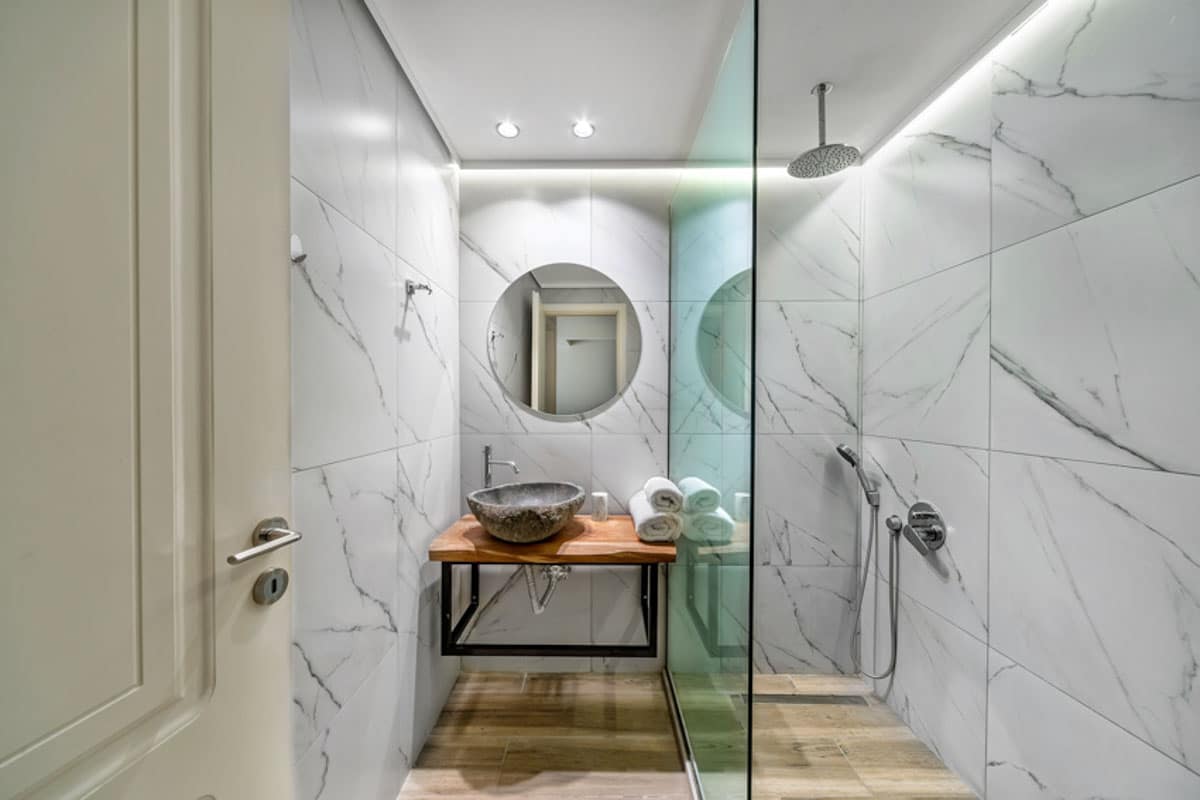
While there are no hard rules regarding the right size of tile to use in a bathroom, scale is important. Large tiles can look off in a small bathroom when not properly designed to harmonize the tiles with other elements of the room.
The tile placement is also crucial in making a large tile work. Large horizontal tiles, for instance, can widen a narrow room; meanwhile, they can make the floor-to-ceiling height seem higher when laid vertically. At the same time, large vertical tiles can make a small room compact, further emphasizing the limited space.
Other factors to consider also include the grout lines. According to Kate Spencer of Tile Outlets of America, a small bathroom can look amazing with larger tile due to its fewer amount of grout joints. She explains with fewer grout joints; there is an increased feeling of spaciousness.
While there are fewer grout lines when using larger tile pieces, placing the tiles where termination is not abrupt or off against the corners can be challenging. The spacing between the seams is another factor to consider. The larger the gap, the more prominent the grout lines.
Besides the grout lines, tile placement, and visual balance, the installation process needed for large format tiles can pose challenges. Since there’s limited space available during installation, laying out the tiles may be difficult or even impossible.
There’s also the weight of the tile, which will likely need two persons to be able to lift and align the tile. Installing on corners and around fixtures can also be a challenge in cutting large format tiles will need professional tilers to have a seamless install. A 15”x15” size tile might be more manageable than larger tiles.
Are Big or Small Tiles Better in a Small Bathroom?

Personal preferences mainly dictate whether a small or large tile is better than a small bathroom. The area and shape of the bathroom are other factors to consider. The tile layout design can also affect how a tile looks in a small bathroom.
However, a successful installation of large-format tiles can look seamless and modern. The continuous surface can make a room look wider or taller. Larger tiles are not advisable for bathroom floors as cracks and hairlines can easily develop with heavy foot traffic. Some homeowners combine both, using larger tiles for walls and adding small tiles as decorative accents or in specific areas.
See more related content in our article about subway tile bathroom on this page.


